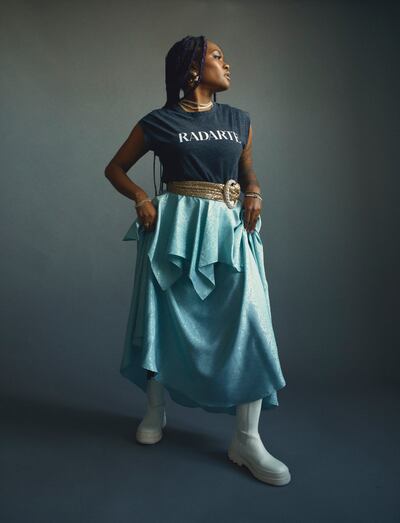
The Business of Fashion
Agenda-setting intelligence, analysis and advice for the global fashion community.

Agenda-setting intelligence, analysis and advice for the global fashion community.

When Lauren Wilson decided to start the luxury resale venture Dora Maar, the former Moda Operandi executive knew she would need a unique angle for securing inventory in order to compete with more established players.
She landed on a model aimed at targeting sellers who each already owned a deep supply of covetable products: Since its launch in 2019, Dora Maar has recruited around 60 influencers (or muses, as the site calls them) to resell items from their wardrobes via individual store-fronts on the platform.
The strategy has allowed it to tap into some of the most desirable closets in New York City while attracting the clients who covet the influencers’ look. Lilah Ramzi, a features editor at Vogue, and Lauren Levison, a fashion collector and jewellery curator, are among the women who sell on the platform.
“It’s really sellers who have a point of influence or voice in the fashion industry. They don’t have to work in fashion, but essentially they’re someone that people look up to and have a story behind the items that they’re selling,” Wilson said. “It’s like, I didn’t just get this Chanel jacket off a website; I got this Chanel jacket from a Vogue editor.”
ADVERTISEMENT
Dora Maar’s model aims to tackle a challenge that all resale players face: how to maintain a steady stream of desirable inventory as the business scales.

The fight for “pre-loved” Chanel flap handbags, Valentino gowns or rare Jean Paul Gaultier vintage pieces has intensified as investors pour money into the fragmented, highly competitive resale sector. French platform Vestiaire Collective hit a $1.7 billion valuation after two €178 million ($210 million) funding rounds last year. Others like Grailed and Rebag, both based in New York, have raised tens of millions in venture capital.
But many players are still operating in the red: The RealReal, for example, reported a net loss of $236 million last year, an increase from $176 million in 2020. Players say profitability will come with greater scale, but scale requires the secondary market to be constantly fed with enough of the right product.
“It is a challenge, as there is a lot of competition from both formal platforms, but also informal channels like social media,” said Brice Dunlop, senior analyst at research firm Fitch Solutions.
“The biggest constraint is definitely on supply,” echoed Rui Rapazote, co-founder and CEO of B2B resale platform Luxclusif, which Farfetch acquired in December.
In theory, billions of dollars worth of products are still sitting untapped inside the closets of consumers. The luxury secondary market was estimated to be worth $32 billion in 2020, but only 5 to 7 percent of resalable inventory — items that are in good condition — globally was actually resold in 2020, leaving roughly $511.2 billion worth of luxury fashion in people’s closets, according to BoF Insights analysis.
“As [the luxury market] grows, it also grows the supply pool that exists. The question is: How do you get to that supply pool?” Rapazote said.
Even if the inventory exists, getting a hold of those idle luxury goods will be crucial to future growth. Luxury’s resale players are investing in high-touch services and customer acquisition drives to avoid running into an inventory crunch.
ADVERTISEMENT
As [the luxury market] grows, it also grows the supply pool that exists. The question is: How do you get to that supply pool?
Chasing Elite Sellers
As for many luxury retailers in the primary market, a small pool of sellers can often generate a disproportionate share of revenues for luxury resale players. That’s led some to make cultivating relationships with ultra-high-net-worth luxury consumers the core of their business.
Those shoppers are more likely to have wardrobes brimming with stocks in good condition and hard-to-find products from hot brands. And their primary shopping habit is often able to supply a steady stream of inventory to restock secondhand players’ virtual shelves.
“It’s those clients that give you the constant and consistently good stock,” said Tatiana Wolter-Ferguson, chief executive at the resale platform HEWI (Hardly Ever Worn It), which launched in 2012 and positioned itself as a discrete service for fashion editors, celebrities and even royalty to clear out their closets.
But those can also be the hardest clients to reach. Unlike many buyers of secondhand, who cite value and affordability as key drivers for purchasing on the secondary market according to a YouGov survey carried out on behalf of BoF Insights, true luxury consumers don’t always respond to the financial incentive of resale. They are also much less likely to invest the time in photographing, uploading and shipping items themselves.
Some players have captured these luxury customers by offering high-touch consignment services akin to what sellers might be used to in the primary market: this means taking care of everything from picking up items to photographing and uploading products, storing them until they’re sold and fulfilling shipments to buyers. (Under a peer-to-peer model, individual sellers take care of these logistics.) Some, like London-based Cudoni and The RealReal, employ this approach across the entire business, while others, like HEWI and Vestiaire Collective, offer consignment as an added service alongside peer-to-peer marketplaces.
A frictionless, high-quality service helps drive client referrals and word of mouth, helping to acquire hard-to-reach luxury customers who may not have previously considered selling items from their closets. “Word of mouth is the best form of marketing, even to this day,” said HEWI board member Rachel Reavley.
Word of mouth is the best form of marketing, even to this day.
But while these tactics can secure sought-after items from sellers who will barely miss them, such high-touch services are expensive to operate at scale. Because of the endless variations of styles, sizing and condition at resale, consignment requires platforms to process every item as unique: the usual economies of scale traditional e-commerce sites benefit from do not apply. Handling the pickup, storage and listing of goods on top of authenticating them and sending them out to buyers, is costly and time-consuming.
ADVERTISEMENT
Platforms are increasingly investing in technology and other solutions to help make the business model more cost-efficient at scale, but that, too, isn’t cheap, notes Fitch Solutions’ Dunlop.
Luxclusif, a B2B resale service, has found an opportunity in connecting various resale players to a broader pool of globally sourced inventory. The company acquires, authenticates and re-distributes pre-owned luxury items across different platforms like marketplaces, auction-houses and retailers. It also provides white-label services, for example, it powers Farfetch’s Second Life resale programme, a tie-up that predated its acquisition by the tech marketplace.
Primary Market Tie-Ups
Another way players hope to boost their inventory and scoop up new clients is by partnering directly with brands and retailers: Vestiaire Collective, for example, has sold near 5,000 items that previously belonged to Mytheresa shoppers since inking a partnership with the retailer in August, leveraging the luxury e-tailer’s close relationship with its high-spending clients to tap into their wardrobes. (The partnership is only available to a select group of Mytheresa’s top customers, who receive Mytheresa store credit in return for their goods.)
Others are helping brands sell overstocks or returned items which didn’t make it back onto the shop floor due to a damaged box or missing tags: Cudoni has agreements in place with some department stores, CEO James Harford-Tyrer said.
Dora Maar works directly with brands, too, with labels selling secondhand goods or overstock through online storefronts animated by muses aligned with their image. Rodarte, which partnered with costume designer Charlese Antoinette, was the first brand to come on board in December.
Growing the Market
While the resale market may be rife with start-ups competing for space in the market, boosting inventories mainly depends on converting new sellers to the space, according to Max Bittner, CEO at Vestiaire Collective. “We really don’t compete with each other, we’re competing against the majority of the population who’ve not started selling secondhand products and still have items lying in wardrobe,” he said.
We really don’t compete with each other, we’re competing against the majority of the population who’ve not started selling secondhand products and still have items lying in wardrobe.
Despite the rapid growth and traction with investors, the sector remains pretty niche among the general population. Brand awareness of resale platforms is still low, even among market leaders in their home markets. A 2021 survey by YouGov found only 17 percent of US consumers were aware of The RealReal, while just 16 percent of French consumers said they were aware of Vestiaire Collective.
In a bid to cast a wider net, Vestiaire Collective recently launched a splashy marketing campaign across outdoor, print and digital channels. The spots featuring a Muppet-like cast of luxury fashion victims are plastered throughout public transit in Paris, where the company is headquartered.
Whether the marketing push will help garner sellers with the right inventory, or simply more buyers remains to be seen. Bittner hopes it’s both.
“A lot of people just don’t know about us, full stop. That’s a strong indicator that it’s still very early days,” Bittner said.
 Opens in new window
Opens in new windowCompanies like The RealReal and ThredUp promised Wall Street that with scale comes profit. But operational costs and competition have kept them in the red.
The secondhand market is booming, and a growing number of labels are piling in. But selling pre-worn trousers and handbags online — and turning a profit — is challenging.
Pre-loved fashion is on the rise, as old clothes find new wearers via global technology platforms. What are the rewards and the risks of this resale revolution?
The fashion giant has been working with advisers to study possibilities for the Marc Jacobs brand after being approached by suitors.
A runway show at corporate headquarters underscored how the brand’s nearly decade-long quest to elevate its image — and prices — is finally paying off.
Mining company Anglo American is considering offloading its storied diamond unit. It won’t be an easy sell.
The deal is expected to help tip the company into profit for the first time and has got some speculating whether Beckham may one day eclipse her husband in money-making potential.